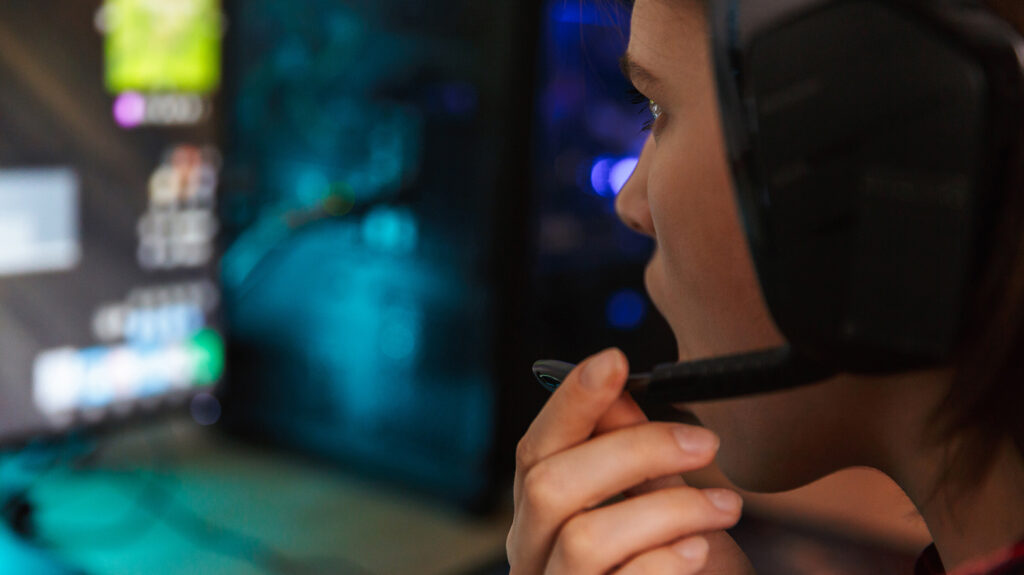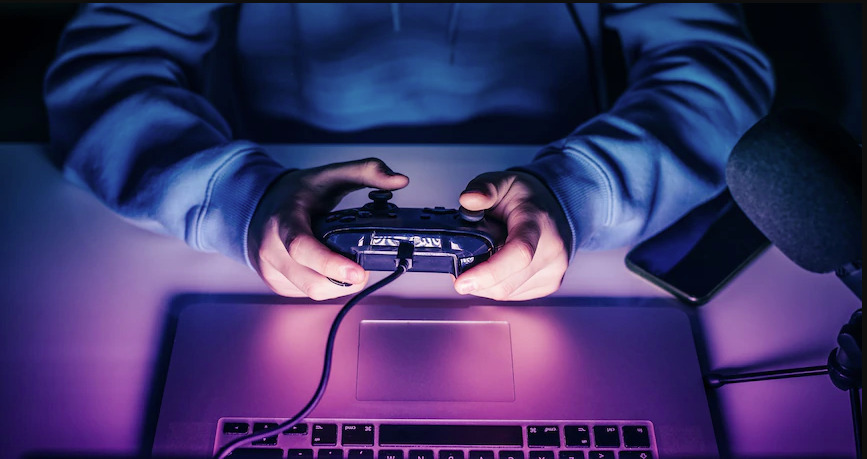According to a study by the ADL for 2022 there was a growing upward trend of online harassment in gaming. But where does this leave gamers currently suffering?
According to a report by the Anti-Defamation League (ADL), rates of harassment, hate, and extremism in online gaming have risen for the fourth year in a row. The report covers rates of harassment and how dangerous white-supremacist ideologies have spread and continue to spread in prominent games such as Apex Legends, GTA, Madden, Roblox, Fortnite, League of Legends, Call of Duty, World of Warcraft, and Overwatch. And while the numbers are disheartening it doesn't take into account those who are currently feeling and living the effects of that harassment, still searching for respite from the storm.
To give some context to the numbers and percentages, Esports.gg dug into recent explorations of online harassment in gaming. We spoke to content creators for an idea on what it's like to live under the cloud of online hate.
Harassment by the numbers

This won't come as a shock to anyone that's stepped into a public lobby of any online game, but harassment in online gaming still grows. According to the ADL report, 77 percent of adult online multiplayer gamers 18 to 45 years old faced severe harassment in 2022. This number is up from previous years. 71 percent said they experienced severe harassment in 2021 and 68 percent in 2020. As for the normal everyday type of harassment, 86 percent of adult gamers surveyed reported experiencing harassment in multiplayer online games.
Harassment here is a broad word, but any kind of negative interaction based on a power imbalance falls under the term. Someone aggressively yelling in team chat, a person screaming in voice, or even more targeted harassment like spamming friend requests after a verbal assault.
This ADL report comes around the same time a video from Women in Gaming Argentina released a video highlighting the extreme levels of sexism found in Valorant. The experiment had three male pro Valorant players use voice modifiers to sound more feminine over voice chat. The results of the experiment were unsurprising, but consistent with the results of the ADL report.
Pro players with a female voice performed drastically worse than when they used male voices over the mic. Since Valorant is a team-based game, the outright hostility of male teammates to female players made the game nearly impossible to win or even play.
This doesn't even take into account games such as Valorant that enable team mates to grief one another in direct ways. For instance, the Agent Raze can damage team mates with her grenades and blast packs.
Real Experiences in online harassment in gaming
Freckxi, a streamer who is outspoken about sexism in gaming, commented to esports.gg on what it's like for women to start gaming. "Gaming and gaming platforms (even streaming) are so male populated it's scary for women and girls to even enter this world." She also commented on how many women are too scared to use a microphone without friends. She says that in many cases just not revealing your gender is safer when around potential harassers, out of fear of hatred and harassment.
With this lived experience in mind, it is not surprising that the ADL report found that 47 percent of women reported experiencing identity-based harassment. This type of harassment means that they were insulted, mocked, or sabotaged in game specifically because they are female.
Sexism is not just in random pub lobbies, but also in the content of some of the most popular YouTubers and Twitch streamers. IShowSpeed, who currently has 14 million followers on TikTok and 14.5 million subscribers on YouTube, was banned from Valorant and all other Riot Games titles earlier this year. What followed was a shockingly sexist rant against a female teammate. He had been banned from Twitch even earlier for "Sexual Coercion and Intimidation" after another bizarre sexist outburst towards Ashaley "Ash Kash" while on stream.
The YouTuber continues to be massively popular, especially with impressionable and younger auidences, despite the overt misogyny and bans from Twitch and Riot Games.
Related articles
Impact on Young Gamers

These types of streamers and their content, along with an altogether toxic gaming culture, have a huge impact on young gamers. According to the ADL, one in ten young gamers said that they treat people worse than usual because of harassment in online games.
A negative and toxic culture not only punishes people for being different, but also forces those same people to conform to feel included. As an example, Fortnite had a bullying problem that came to attract headlines, specifically about in-game cosmetics. Kids were calling each other "Defaults" if they hadn't spent money buying better skins. A young gamer might be mocked for their in-game skills or skins by their team and, feeling hurt or embarrassed, will turn that anger to another player in the future. Thus the cycle of toxicity continues, often hidden by a thin layer of "humor".
And while these can seem like small acts of easily ignorable aggression, it's important to note that the world contains a variety of people. We don't all handle aggression and harassment the same.
A Worrying Rise in Extremist Ideologies

Another troubling result of the survey is the dramatic rise of white supremacy in online games. Adult exposure to white supremacy was eight percent in 2021. This year, it has more than doubled to 20 percent. These rising numbers directly connect to recent mass murders in the United States.
The mass shooting in Buffalo, NY on May 14, 2022, committed by a white supremacist, wrote in his manifesto that playing on Roblox and exposure to extremist ideologies in-game contributed to his radicalization.
The future of harassment in gaming
The ADL study found that 15 percent of young gamers (10-17 years old) found white-supremacist ideologies in multiplayer games online. This number is up from 10 percent in 2021 and shows a worrying trend that gaming companies are doing little to prevent. This information combined with the rise in sexist and homophobic behaviour in younger gamers paints a worrying picture for the future of gaming.
So, what can we can do to help young gamers and prevent the spread of hateful ideologies? The ADL suggests supporting educational efforts for young gamers, supporting marginalized people in the gaming industry, and encouraging gaming companies to better address white supremacy and misogyny. This will enable them to strengthen content moderation.
And it's entirely possible that mitigation of harm is all we can achieve as an online community. Harassment and aggression are a part of everyday life in all forms, so we can't truly ever expect it to go away. However, we can all work to make gaming a better place for everyone and strive to make our own small corners of the internet safe for one and all.
For more information on gaming and future studies stay tuned to Esports.gg.